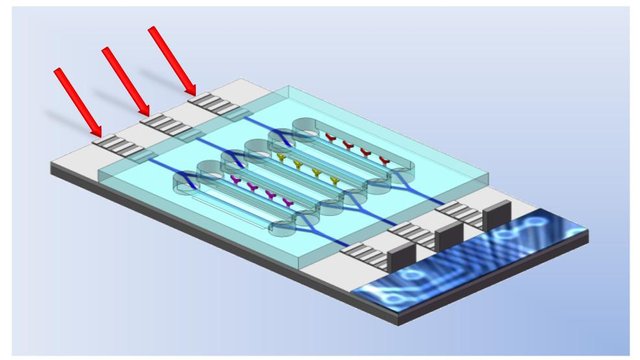Lab-on-a-chip
LOC or Lab-on-a-chip is a device consisting of a single chip of only millimetres capable of integrating laboratory functions to achieve automation and high-throughput screening. It is actually a subset of MEMS (Micro Electro Mechanical systems) often regarded as Micro Total Analysis Systems(µTAS). The device is capable of dealing with pico litres volumes of fluid. It is closely related to microfluidics which includes the physics, manipulation and study of minute amount of fluids. The main difference between LOC and µTAS is that LOC indicates the scaling of lab processes into chip format while the µTAS is responsible for knowing the sequence of lab processes followed by chemical analysis.
Materials and Fabrication
Photolithography is the base for fabrication of LOC. During the initial phases, the processes includes the use of semiconductors like Silicon. But in order to make it chemically compatible and increase the prototyping speed, new processes were designed namely depositing and bonding, glass,ceramics and metal etching etc. These technologies can greatly help in making prototypes with much faster speed and allowing the laboratory functions to be performed on different channels of chip.
Advantages
- Very low fluid consumption
- More control over the chemical reactions
- Better response time
- Parallelisation as multiple channels were provided
- Very low fabrication cost
- Much more safe environment as compared to conventional systems
Disadvantages
- Under development
- Due to small scale analysis of chemical reactions, it becomes very complex to analyse reactions
- Low Signal to Noise ratio thus leading to an inaccurate output
Despite its disadvantages this would become a great technology once it is completely developed. It will not make the chemical reactions faster but also increase the overall control over a chemical reaction. Because the reactions are under pico scales, it will greatly reduce the risks if the reactions become uncontrollable.

